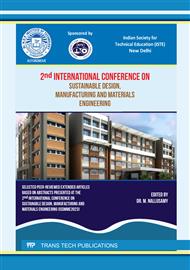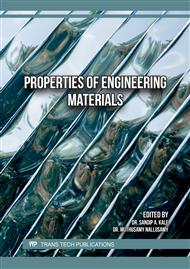p.77
p.85
p.97
p.103
p.117
p.127
p.137
p.145
p.155
Mechanical Properties on Concrete by Replacing Fine Aggregate with Glass Waste Particles: An Experimental Study
Abstract:
Glass wastes are generated by various sectors is creating an environmental issue in our country. The reuse and recycling of Glass Waste Particles (GWP) is a way to reduce the environmental issues, cost of waste management and create sustainable environment. Construction industry is consumed major natural resources by the way of utilizing raw materials particularly making a concrete. The main aim of this experimental investigation is to obtain mechanical properties on concrete by replacing fine aggregate with GWP. In this study, fine aggregate was replaced with GWP from 0% to 40% in the interval of 10%. Based on the test results on concrete by replacement of fine aggregate in its weight of GWP were discussed in terms of compressive, split tensile and flexural strengths. Replacement level of GWP more than 30% produces lower strength. The replacement level of GWP between 20% and 30% in conventional mix may suit at construction industry. However, durability studies are required to study the long-term effect on concrete by replacing fine aggregate with GWP.
Info:
Periodical:
Pages:
145-154
Citation:
Online since:
April 2024
Authors:
Price:
Сopyright:
© 2024 Trans Tech Publications Ltd. All Rights Reserved
Share:
Citation:



